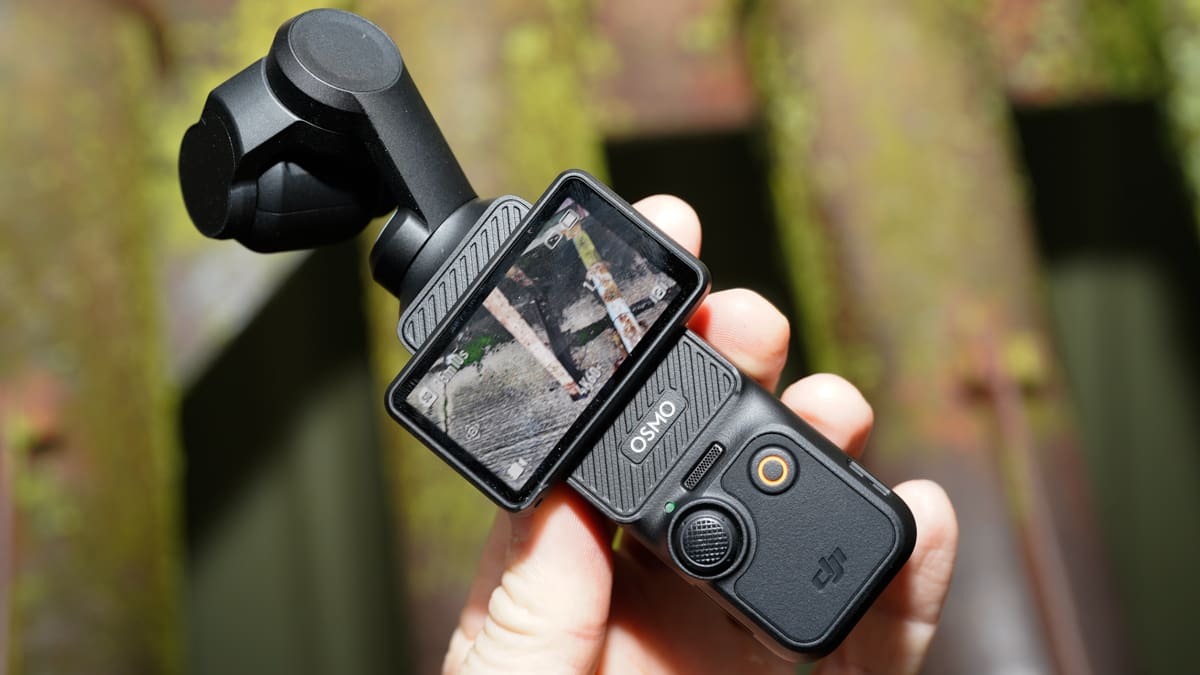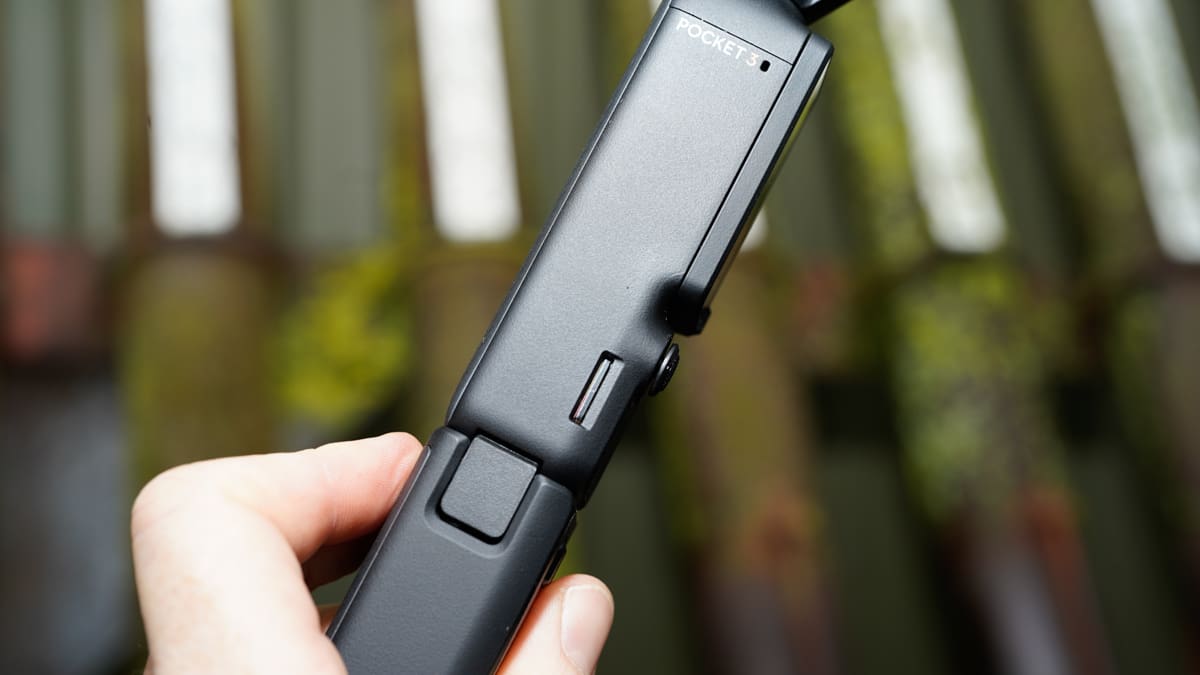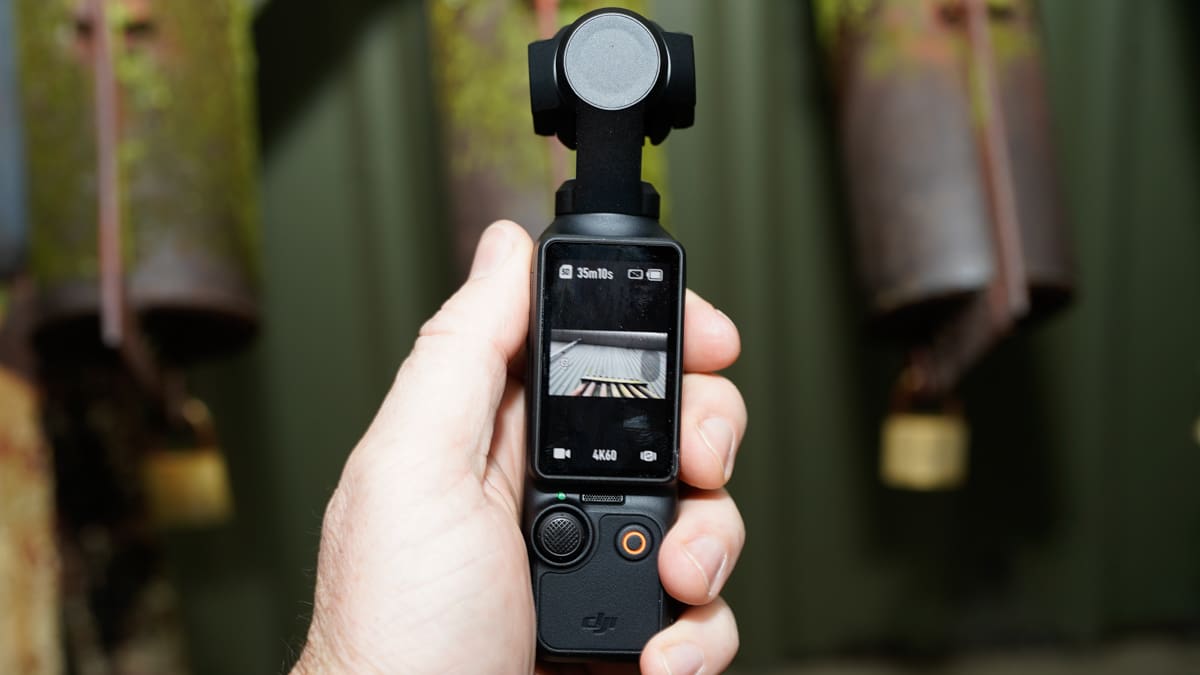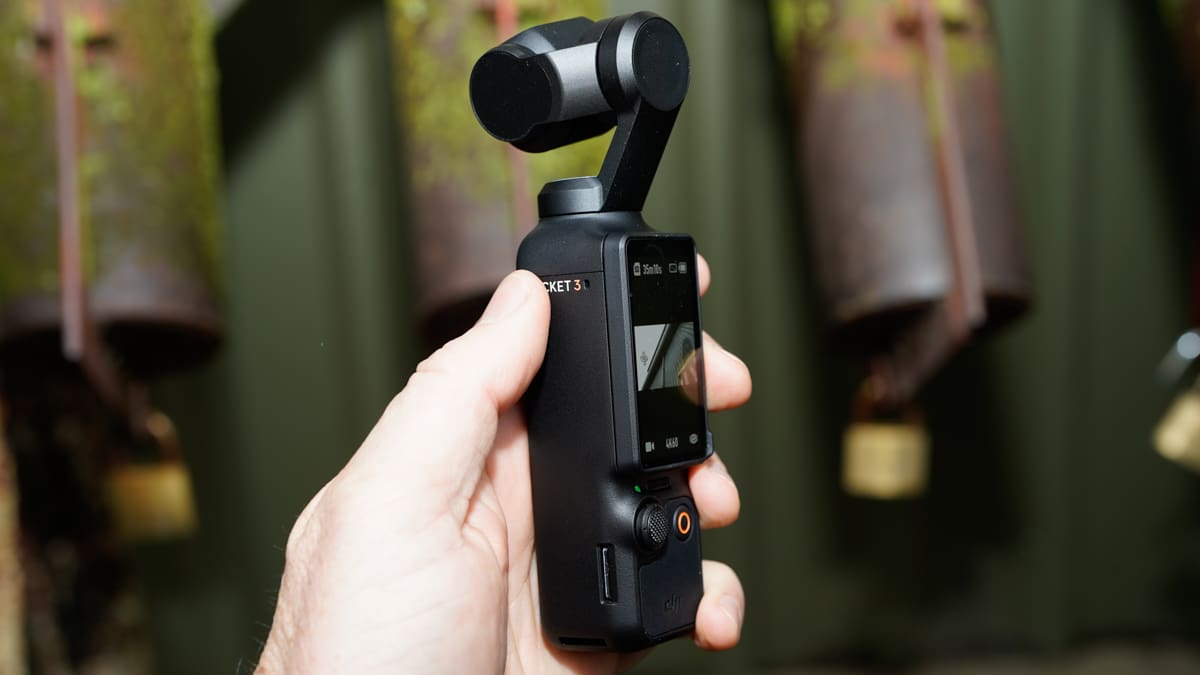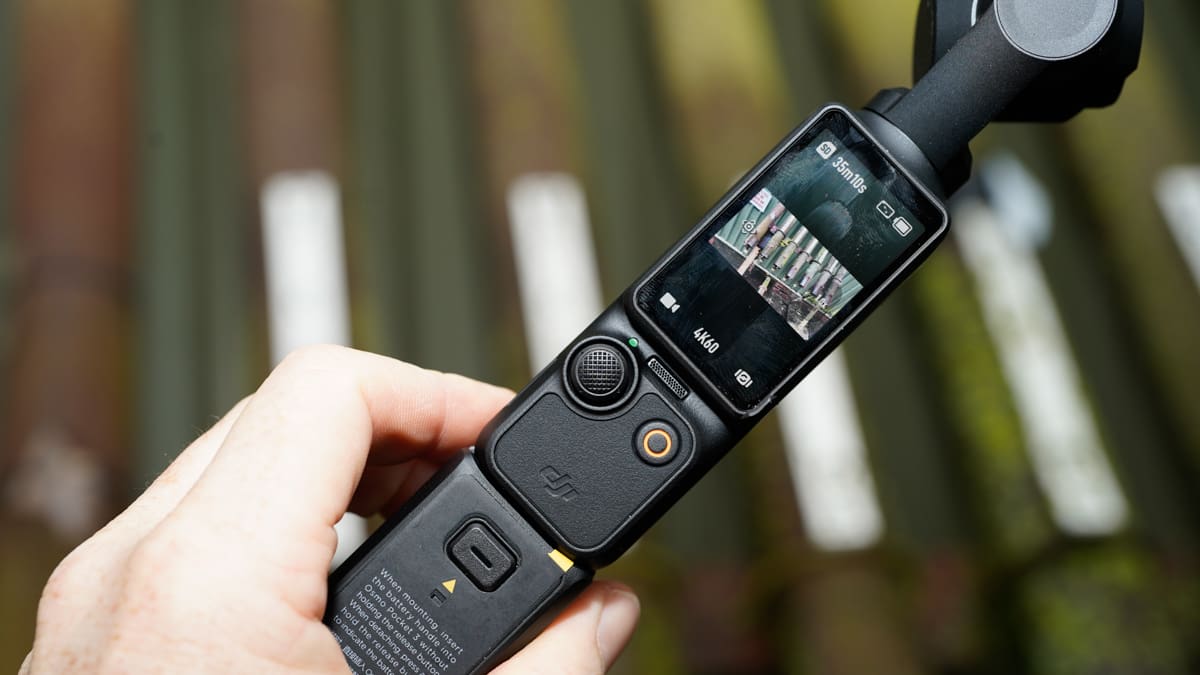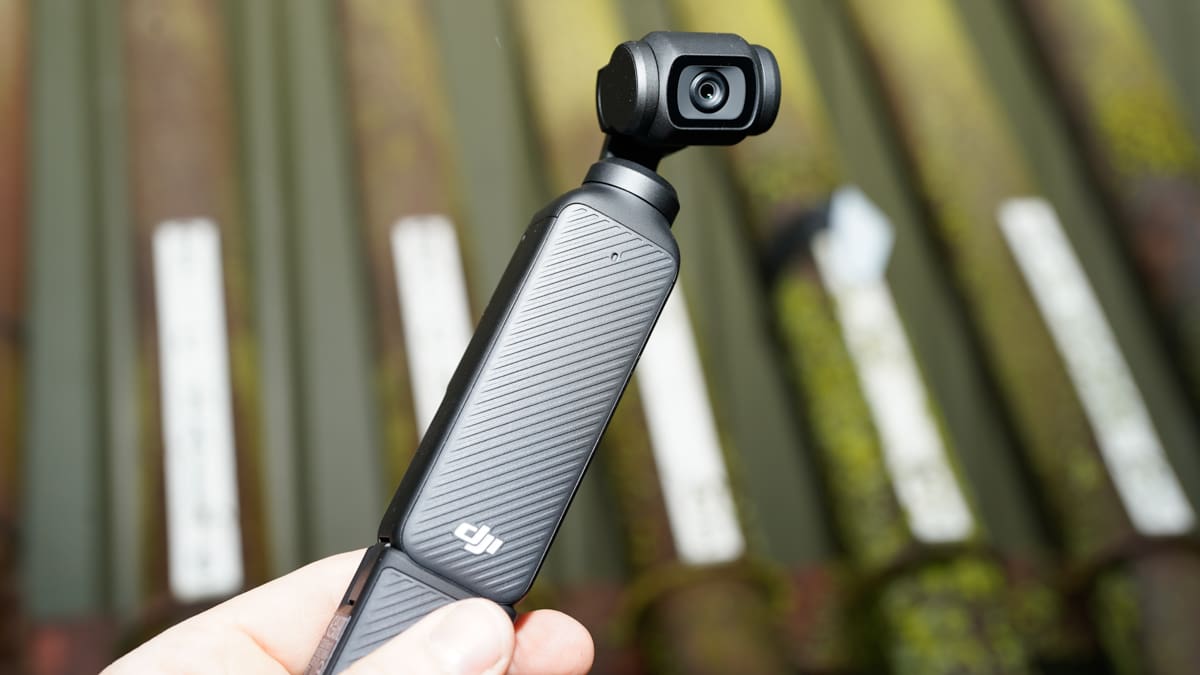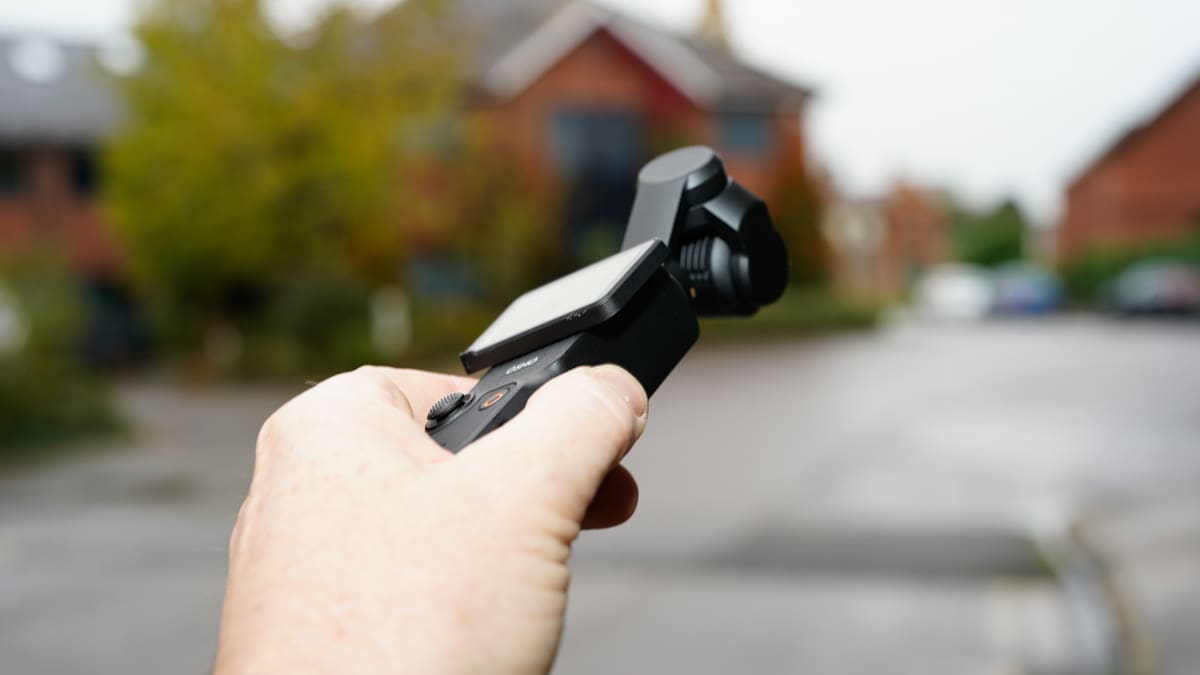Even before you see the logo, you know the DJI OSMO Pocket 3 is DJI. The design, build quality, and layout of the controls are all carefully considered and decidedly DJI. There are three brands that follow this quality of design and build in the action camera sector: GoPro, Insta360, and DJI. All have an equal footing in high-quality build and matching image quality.
You do, of course, pay a premium, but then, compared with all the competition I’ve seen, those three companies stand alone when it comes to making products designed to be functional and robust.
The OSMO Pocket 3 utilizes a high-quality matte plastic exterior with the camera combined into a small gimbal placed on top, as we’ve seen with the previous iterations. The big change here is the large LCD screen that spins from vertical to landscape format, giving you a preview of what you’re shooting, be that in portrait or landscape format depending on the footage’s intended final destination.
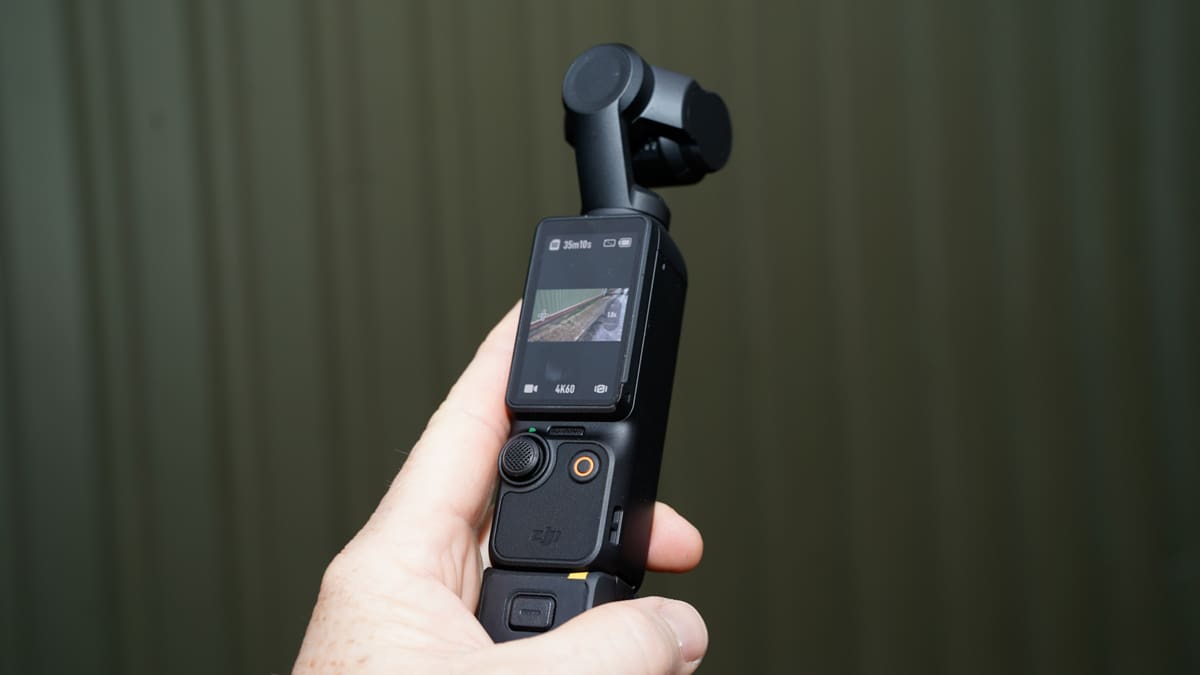
This screen is where the real changes are very obvious. To make room for the screen, the joystick and record button have been moved down the grip, which makes it a little awkward to hold without the additional battery grip fitted. Once that grip is in place, the design again starts to make more sense. While it does make the OSMO Pocket 3 taller, it’s still nice and compact, although less pocketable in clothing and more suitable for backpack pockets.
Once powered on, the OSMO follows the usual touchscreen interface, very similar to the superb OSMO Action 4, enabling you to navigate through the options and settings. For anything more in-depth, you need to dive into the Mimo App, available for both iOS and Android. The version I’ve been using in this review is the pre-release, and for once, everything seems really solid, offering loads of options. A few firmware updates also boosted some of the features and the base resolution and framerates.
Overall, the build quality is, as always from a DJI product, superb. The quality of the plastic used is extremely high quality, and the matte finish reinforces that premium feel. The design of the DJI OSMO Pocket has always been a little quirky, and this release is no different. While the layout has taken a slight hit to incorporate that rotating screen, the use of the screen comes into its own once in use. The battery grip is an accessory, but actually, if you’re taking things seriously, then it’s an essential addition, and once in place, the design layout suddenly makes sense.
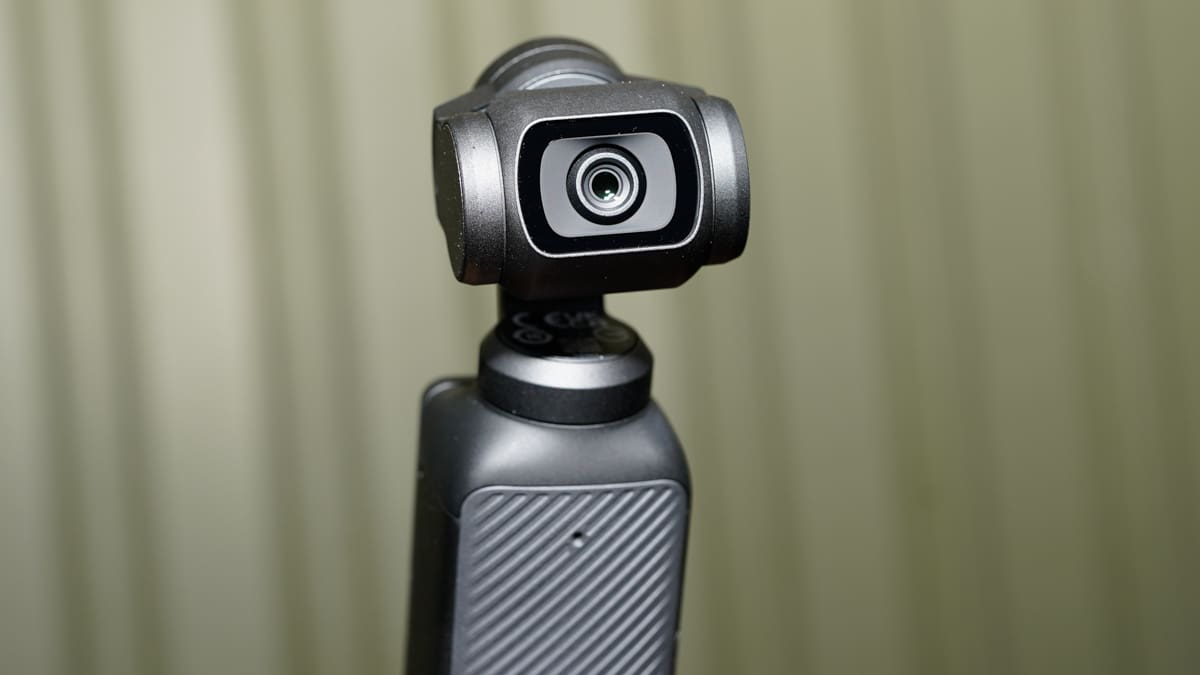
Essentially, you can keep the OSMO Pocket 3 small for day-to-day use and then give it a boost for power and handling when you need to use it a little more seriously.
There are a couple of additional points to add about the design and handling of the OSMO Pocket 3. The first is again about that battery grip. In the Combo Kit, you get a couple of these battery packs, and they don’t just help boost the camera’s battery power, but they also charge the internal battery. This means that you can keep the small OSMO Pocket 3 running all day without stopping. Just click off the battery base, replace it with a charged version, and off you go.
The second significant feature is the new wireless mic. It not only looks amazing with its smoky grey transparent casing but also connects and sounds amazing, essentially turning the OSMO Pocket 3 into the most incredible all-in-one video machine. In the test, I was able to tripod mount the OSMO Pocket 3, activate tracking and the wireless mic, and film a tutorial with great sound and visuals without issue. All really simple.

